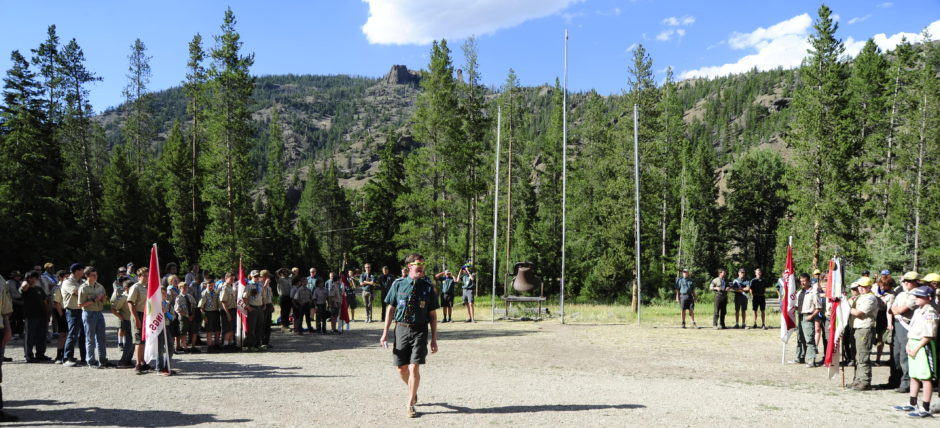Q: What kind of food do you eat in on a trek?
A: Let’s face it: cheese, much like Charmin, should not be squeezed. If you want heavy, bulky, bland, over packaged food, please sign up for a Philmont trek.
Each crew builds a menu for their trek using a combination of dried, bulk foods as well as appropriate fresh foods. Each cook group is also equipped with a full spice kit. Scouts will learn to cook great meals in the backcountry. Menu possibilities include: Pizza, Pad Thai, Fried Cheesy MacLovin’, Cinnamon Rolls, Thunder Mountain Chili…
After you check in at YAHO, your crew will bag its own food for your trek in our food issue room. We bag our own food so we aren’t carrying a bunch of extra weight around. This process also teaches scouts how to build an affordable, tasty, & nutritious backcountry menu from commonly found items. This can also be used to fulfill requirements for cooking and backpacking merit badges.
Q: How far will we hike each day on a trek?
A: That all depends. Most of the terrain in the Absaroka range is very rugged with lots of vertical relief. The Yellowstone plateau is a little flatter with better maintained trails by comparison. Some of your travel will probably be off trail. Daily mileage is usually in the 5-12 mile range.
Q: Since you don’t have staffed camps in the backcountry what will we do out there during a trek?
A: Each trek goes out into the field with two YHAO instructors. They will lead the scouts through a curriculum including Leave No Trace, advanced route finding, natural history, camping in bear country, and advanced backcountry cooking, in addition to brushing up on basic backpacking skills. Many itineraries include time for ascents of nearby peaks. Scouts may also have the opportunity to go fishing and are very likely to see a huge variety of the wildlife that calls the Yellowstone area home.
Scouts will also have the opportunity to work on a variety merit badges while on the trail including: Astronomy, Bird Study, Camping, Cooking, Fishing, Fly Fishing, Forestry, Geology, Hiking, Mammal Study, Nature, and Weather. Instructors will ask during your orientation which topics you would like to cover during your trek.
Q: How cold is the river in the Whitewater program?
A: River temperatures vary depending on which stretch of river you are on and when. The North Fork of the Shoshone starts in the low 40’s in early June but warms up to the upper 50’s by the end of whitewater season in Mid-July. The Main Shoshone below the dam is noticeably warmer all year, thanks to a steady release and an infusion from DeMaris Hot Springs just upriver from our put-in.
YHAO supplies everyone a paddle jacket that really helps keep your core temperature up. You should bring a pair of lightweight wind/waterproof pants to keep your legs warm. Wearing a synthetic base layer (top and bottom) as well as a fleece jacket really helps keep you warm. A pair of neoprene river booties is very nice for early season trips. We also recommend bringing a spare fleece or puffy top to keep in the dry bag as an emergency layer.
Q: I have my own climbing equipment, can I use it?
A: You are free to bring your own shoes, helmet and harness. Our staff must inspect and approve any equipment that scouts bring. As per BSA regulations, scouts may not use their own ropes or hardware (carabiners, belay devices, etc.).
